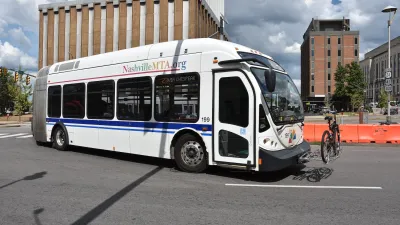As traditional zoning comes under increasing criticism for its exclusionary practices, strict separation of uses, and controls on density, Daniel Nairn explores its genesis and the arguments of pioneering planner Edward Murray Bassett.
Nairn summarizes and examines a pamphlet written in 1922 by Bassett, who authored the first comprehensive zoning ordinance for New York City, for insight into the early intentions of those propagating the newly established tool. Nairn explores the nine primary arguments in favor of zoning made by Bassett in his attempt to convince more municipalities to adopt the emerging land use tool, and is struck as much by what comprises his case, as what does not.
"Notice the complete absence of social, moral, or ideological language. These are not the words of a utopian academic envisioning the city of the future, but rather a politically-astute pragmatist addressing a chamber of commerce or some other worldly audience. Bassett deliberately distanced himself from any 'radical experimentation' even while presenting what was on the regulatory cutting edge of the time. Unlike some previous planners, he did not present zoning as a tool for class segregation. He didn't even really mention class, or housing conditions, or city beautification, or any of the other movements popular at the time. His focus was squarely on return on investment."
Nairn concludes his essay by questioning how Bassett may have viewed the outcome of the landmark Village of Euclid v. Ambler Realty Co. case, in which the justices granted more power to zoning than he had anticipated.
"I'd like to think that Bassett, at least in some honest moments, felt a
little like Dr. Frankenstein. He had persuasively (to me at least)
argued for a community's responsibility to form some order out of chaos,
only to see zoning grow to reinforce the benefit of 'favored localities' at the expense of others. He wrote that zoning 'should follow nature and it should not be forgotten that the city has a history,'
yet this tool had begun to artificially restructure the 20th century
city into a form never before seen. He had expected the courts to be a
bulwark against taking this power too far. But that did not happen."
FULL STORY: Edward Murray Bassett and the Origins of Zoning

Trump Administration Could Effectively End Housing Voucher Program
Federal officials are eyeing major cuts to the Section 8 program that helps millions of low-income households pay rent.

Planetizen Federal Action Tracker
A weekly monitor of how Trump’s orders and actions are impacting planners and planning in America.

Ken Jennings Launches Transit Web Series
The Jeopardy champ wants you to ride public transit.

Crime Continues to Drop on Philly, San Francisco Transit Systems
SEPTA and BART both saw significant declines in violent crime in the first quarter of 2025.

How South LA Green Spaces Power Community Health and Hope
Green spaces like South L.A. Wetlands Park are helping South Los Angeles residents promote healthy lifestyles, build community, and advocate for improvements that reflect local needs in historically underserved neighborhoods.

Sacramento Plans ‘Quick-Build’ Road Safety Projects
The city wants to accelerate small-scale safety improvements that use low-cost equipment to make an impact at dangerous intersections.
Urban Design for Planners 1: Software Tools
This six-course series explores essential urban design concepts using open source software and equips planners with the tools they need to participate fully in the urban design process.
Planning for Universal Design
Learn the tools for implementing Universal Design in planning regulations.
Heyer Gruel & Associates PA
Ada County Highway District
Institute for Housing and Urban Development Studies (IHS)
City of Grandview
Harvard GSD Executive Education
Toledo-Lucas County Plan Commissions
Salt Lake City
NYU Wagner Graduate School of Public Service





























